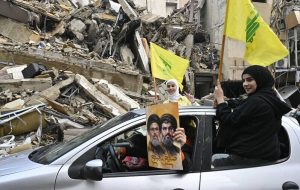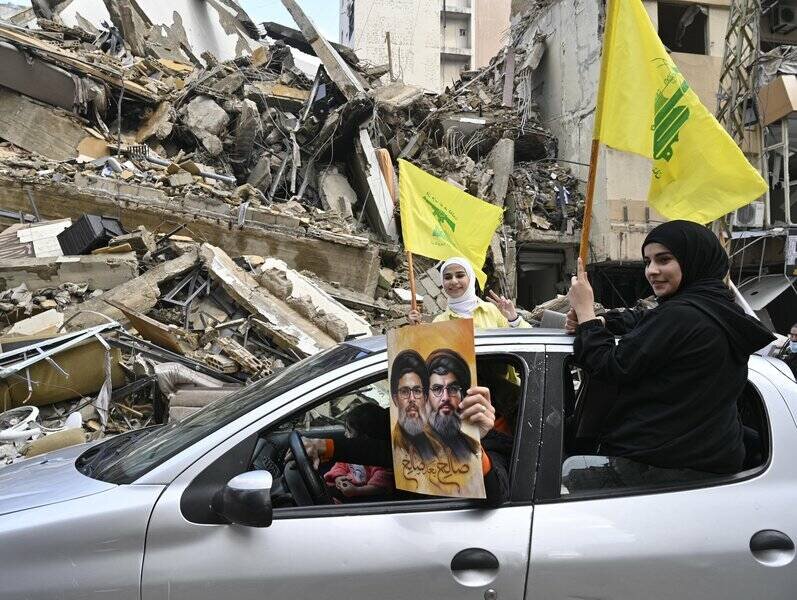How Hezbollah stunned the Israeli regime
BEIRUT- The Lebanese resistance Hezbollah executed a military strategy to pressure the Israeli regime into ending its bombing campaign against civilians and accept a ceasefire. Whilst the regime thought it had the upper hand by assassinating senior Hezbollah leaders and military commanders, the resistance in Lebanon was one step ahead. Before escalating its military campaign


BEIRUT- The Lebanese resistance Hezbollah executed a military strategy to pressure the Israeli regime into ending its bombing campaign against civilians and accept a ceasefire.
Whilst the regime thought it had the upper hand by assassinating senior Hezbollah leaders and military commanders, the resistance in Lebanon was one step ahead.
Before escalating its military campaign on Lebanon to a full-scale war, Hezbollah had already captured the most sensitive sites in Israel.
Hezbollah released a series of videos that only published a tiny fraction of its UAVs capturing reconnaissance footage of sites critical to the survival of the Israeli occupation.
These included Haifa and the occupied Golan Heights.
The footage of Haifa was taken back in June. Fast forward to mid-October, Haifa came under almost daily Hezbollah attacks targeting different military bases, including Israeli naval bases.
Experts believe that Hezbollah refrained from publishing other sensitive sites in Israel in what became known as the Hodhod series of footage that was released later in stages.
In mid-October, Hezbollah attacked the Golani brigade training camp in the central city of Binyamina with drones.
The precision of the strikes injured scores of the regime’s most elite troops and killed at least four others.
On October 19, the Lebanese resistance fired three drones that damaged the home of Israeli Prime Minister Benjamin Netanyahu in the town of Caesarea.
The attack struck the bedroom of the now officially wanted Israeli leader at the Hague for war crimes after an arrest warrant was issued against him by the International Criminal Court.
Hezbollah further frightened the Israeli regime with its missile strikes.
Despite Israeli leaders claiming to have taken out 80% of Hezbollah’s missiles, the resistance waged daily missile strikes over the past month that took the electricity out in parts of Haifa.
What was more concerning for the Israeli regime and its main supporter, the United States was that during the last weeks, Hezbollah intensified its attack on Tel Aviv.
Whilst the Israeli industrial hub of Haifa faced significant damage, the commercial hub of Tel Aviv also came under heavy missile and drone attacks.
Army bases were repeatedly targeted in Tel Aviv and its outskirts, including Glilot, belonging to the Israeli military intelligence unit 8200.
What appears to have shocked Israeli military strategists was that Hezbollah managed to sustain its formula of targeting Tel Aviv in response to air raids on Beirut.
In the final stages of the 71 days of Israeli aggression on Lebanon, Hezbollah waged one of its largest attacks on Tel Aviv, Haifa, and many other cities across Israel.
More than 300 missiles, drones, and rockets were used on Sunday, and a record number of 51 military operations were staged. The largest figure since October 8, 2023, when Hezbollah started trading fire with the Israeli military in a support front for Gaza.
Also on Sunday, the resistance, not for the first time, targeted military sites 150 kilometers from the Lebanese border.
On the ground in Southern Lebanon, the Israeli invasion faced fierce Hezbollah resistance, which prevented the occupation army from taking control of a single village on the Lebanese border.
Hezbollah says it injured around 1,300 troops on the Lebanese border and killed more than 120 others. Israeli infantry suffered significant losses inside southern Lebanon.
More importantly, the Israeli war mission of returning settlers to the north failed to materialize with the use of military force. Following the announcement of a ceasefire, displaced Israeli settlers are still voicing deep concerns about returning to the north.
This is while displaced Lebanese people have returned to the south in their droves amid footage showing heavy traffic on roads leading to southern towns and villages.
On the 71st and final day of the Israeli aggression in Lebanon, Hezbollah carried out 26 operations. This included the targeting of 23 areas in Israel with the largest missile attack covering 120 kilometers. Three operations were staged against gatherings of Israeli occupation forces on Lebanese territory.
Furthermore, two Israeli military vehicles were destroyed, seven military bases were targeted, three military sites and barracks were struck, and eleven gatherings of Israeli troops were targeted on the other side of the Lebanese border.
On the last day of the aggression, Hezbollah used five surface-to-air weapons, fired 17 surface-to-surface missiles, one “qualitative” missile, two medium-range missiles, and planted one explosive device against Israeli forces.
The pattern shows that Hezbollah could have carried on with the battle, but the Israeli regime could not carry on sustaining the level of damage by Hezbollah.
